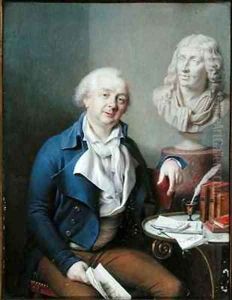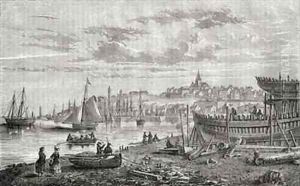Charles-Marie Bouton Paintings
Charles-Marie Bouton was a French painter born on February 3, 1781, in Paris, France, into an artistic family. His uncle, Claude Bouton, was also a painter, suggesting that Charles-Marie may have been exposed to the world of art from a young age. He studied under the neoclassical painter Jacques-Louis David, which greatly influenced his early work. Bouton is particularly known for his contribution to the development of dioramas, a form of painting that creates an illusion of depth and three-dimensionality.
Bouton's career took a significant turn when he collaborated with Louis Daguerre, the inventor of the daguerreotype process of photography. Together, they created the Diorama theatre in Paris in 1822, an entertainment that became popular in Europe and America. A diorama in this context was a large theatrical experience, not the small-scale models commonly associated with the term today. It involved large-scale paintings on translucent materials that could be lit in various ways to create changing scenes, giving the illusion of different times of day and weather conditions. The effect was further enhanced by physical props and changes in perspective.
Although Daguerre is often more remembered for his later contributions to photography, Bouton was instrumental in the invention and refinement of the diorama technique. He painted numerous works for these exhibitions, showcasing his ability to manipulate light and perspective. His dioramas were particularly noted for their realistic depiction of architectural subjects. In 1828, he left the partnership with Daguerre to establish his own Diorama in London, which was successful for a number of years.
After his return to France, Charles-Marie Bouton continued to paint and exhibit works, but his later years were marked by financial difficulties and a decline in popularity as new forms of entertainment emerged. He died in poverty on July 29, 1853, in Tours, France. Despite the relative obscurity of his name today, Bouton's innovations in the world of dioramas have left a lasting legacy in the fields of visual art and entertainment.

